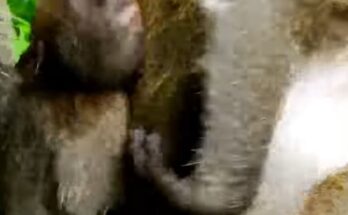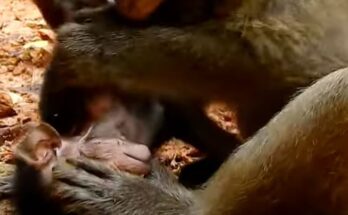The grey langoor, also known as the Hanuman langoor, is a captivating primate found in the forests and urban areas of South Asia. Among its intriguing behaviors, the angry calling of a male langoor stands out as a remarkable phenomenon, both startling and mesmerizing.
Male grey langoors are known for their loud, distinctive calls, which serve multiple purposes within their social structure. These calls, often described as deep, guttural sounds, are used to assert dominance, communicate with other members of their troop, and ward off potential threats. The intensity and frequency of these calls can vary depending on the context, with the most aggressive calls being reserved for confrontations with rival males or perceived predators.
One of the most striking aspects of the angry calling is its role in establishing and maintaining the social hierarchy within a langoor troop. The dominant male, or alpha, uses his powerful vocalizations to reinforce his status and keep subordinates in line. These calls can be heard echoing through the forest, a clear signal to any challengers that the alpha male is vigilant and ready to defend his position.
The angry calls also play a crucial role in protecting the troop from external dangers. When a male langoor detects a threat, such as a predator or an intruding male from another troop, he will emit a series of loud, aggressive calls. This not only alerts the rest of the troop to the danger but also serves to intimidate and deter the potential threat. The combination of vocal power and the sheer presence of the male langoor creates a formidable defense mechanism.
Observing the angry calling of a grey langoor male monkey in the wild is an unforgettable experience. It offers a glimpse into the complex social dynamics and survival strategies of these fascinating primates, highlighting their adaptability and the intricate ways they communicate and protect their communities.


